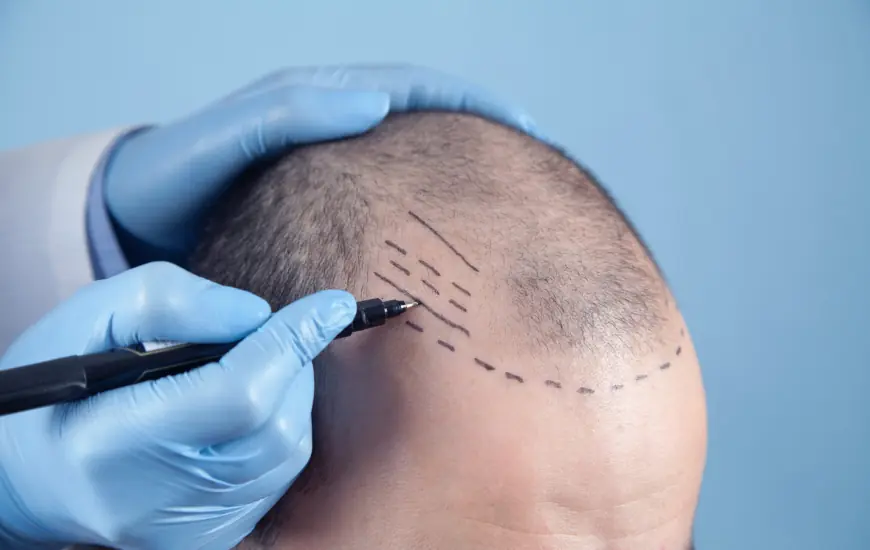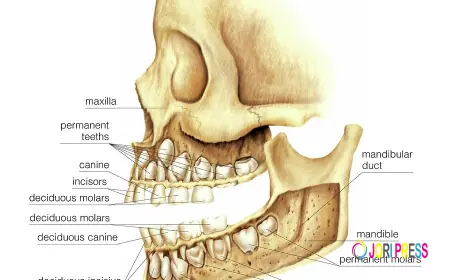Crown Hairline Design: Why Angle Matters
Crown hair transplant in Islamabad restores hair in the balding crown area using advanced techniques for natural, long-lasting results and improved confidence.

When it comes to hair restoration, one of the most intricate and technically demanding areas to treat is the crown or vertex region of the scalp. Unlike the frontal hairline, which is relatively straightforward to design and transplant, the crown has a distinct spiral pattern that varies from person to person. This is why crown hairline design requires extreme precision—and why the angle of graft placement is one of the most important factors for achieving natural-looking results.
If you're considering a Crown hair transplant in Islamabad, it's essential to understand how the design, especially the angle of graft placement, can impact your outcome. Let's explore why the angle matters so much and how experienced surgeons tailor treatments to recreate the natural swirl of the crown.
The Anatomy of the Crown Area
The crown, also called the vertex, is located on the upper back portion of the scalp. Unlike the straight-line arrangement of hairs on the hairline or the top of the head, the crown typically features a spiral or whirlpool-like growth pattern. Each person’s crown has its unique swirl direction and density, making a one-size-fits-all approach ineffective.
When hair loss occurs in this region, it can be more noticeable, especially in cases of advanced male pattern baldness (Norwood Scale Stage 4-7). Therefore, a precise and individualized restoration plan is critical.
Why Angle Is Crucial in Crown Transplants
1. Recreating Natural Growth Patterns
The main goal of any hair transplant is to mimic nature. Nowhere is this more important than in the crown area, where hair naturally emerges at various angles and directions, forming a distinctive spiral. When grafts are not placed in alignment with this pattern, the result can look artificial or messy.
A poorly executed crown transplant, where grafts are implanted in a uniform direction, can disrupt the natural look and make it obvious that a procedure was done. By carefully analyzing and replicating the patient’s natural hair growth angles, the transplant can blend seamlessly with existing hair.
2. Preventing Hair from Growing in the Wrong Direction
Hair that grows at an improper angle not only looks unnatural but may also interfere with styling. In some cases, misaligned grafts can even cause discomfort or ingrown hairs. Proper angling ensures that the newly transplanted follicles follow the scalp’s curvature, lie flat, and integrate smoothly with surrounding hair.
3. Density and Coverage Efficiency
Angling also impacts how dense the crown appears post-transplant. Grafts planted at inappropriate angles may not provide the desired visual density, even if the number of grafts used is technically sufficient. Skilled surgeons use angle manipulation to create the illusion of fullness, using fewer grafts more effectively—a significant advantage, especially for those with limited donor supply.
4. Avoiding Overcrowding and Damage
Each follicular unit transplanted must occupy its own space. Incorrect angles can cause overlapping or collision with adjacent grafts, increasing the risk of damage, poor growth, and suboptimal healing. Designing the angles appropriately reduces this risk and allows for even healing and long-term survival of the grafts.
The Art and Science of Designing the Crown
Crown hair transplant is both a scientific and artistic procedure. Surgeons must not only follow the natural anatomy of the crown but also forecast future hair loss. This ensures the transplant doesn't look odd if more surrounding hair is lost later on.
Here are key steps professionals follow:
1. Detailed Assessment of the Growth Pattern
The surgeon studies the existing crown area, paying attention to the swirl direction, angle of emergence, density, and scalp laxity. This assessment helps map out where and how the grafts will be implanted.
2. Use of Slit and Channel Techniques
Slits or channels are created at exact angles to house the grafts. The direction, depth, and orientation of these incisions are crucial to ensuring the transplanted hairs lie in a natural flow.
3. Strategic Placement of Grafts
Single-hair grafts are placed on the outer edges of the crown, while multiple-hair grafts (usually 2-3 hairs) are used in the center to boost density. The angle and curl of each follicle are adjusted to match surrounding hair.
4. Utilization of Modern Tools
Advanced tools like implanters or custom-made blades help in placing grafts with unparalleled accuracy. These tools allow for consistent angling, reducing trauma to the scalp and improving graft survival rates.
Challenges in Angle Design for Crown Area
Despite all precautions, there are challenges in perfecting the angles in the crown area:
-
Hair Caliber: Thicker hair creates more density but can be harder to angle correctly.
-
Limited Donor Supply: In severe cases of baldness, surgeons must work with fewer grafts and rely heavily on angling to maximize visual impact.
-
Hair Curl: The natural curl or wave of the hair can alter the direction in which it ultimately lays.
-
Future Loss: If the design doesn’t take potential future hair loss into account, unnatural gaps may emerge.
Tips for Patients Considering Crown Transplant
If you're planning to restore your crown:
-
Choose an experienced surgeon: Crown design requires more skill than frontal hairline transplants.
-
Ask to see before-and-after photos of previous crown transplant cases.
-
Understand that the crown takes longer to show results—expect visible changes between 8–14 months post-transplant.
-
Be realistic about density: The crown typically doesn’t achieve the same density as other parts due to limited grafts.
Conclusion: Why Experience and Precision Matter
Crown hairline design is not a one-step process—it’s a carefully calculated treatment that depends heavily on angling and direction. A well-performed crown transplant can completely transform your look, making it indistinguishable from natural hair growth. However, achieving this outcome requires an experienced hand and a keen artistic eye.
If you're considering a Crown hair transplant in Islamabad, ensure you consult with a clinic that prioritizes natural design, personalized planning, and advanced tools for precision. One such trusted destination is the Dynamic Clinic, known for delivering results that blend aesthetics with science.
What's Your Reaction?
 Like
0
Like
0
 Dislike
0
Dislike
0
 Love
0
Love
0
 Funny
0
Funny
0
 Angry
0
Angry
0
 Sad
0
Sad
0
 Wow
0
Wow
0


















































